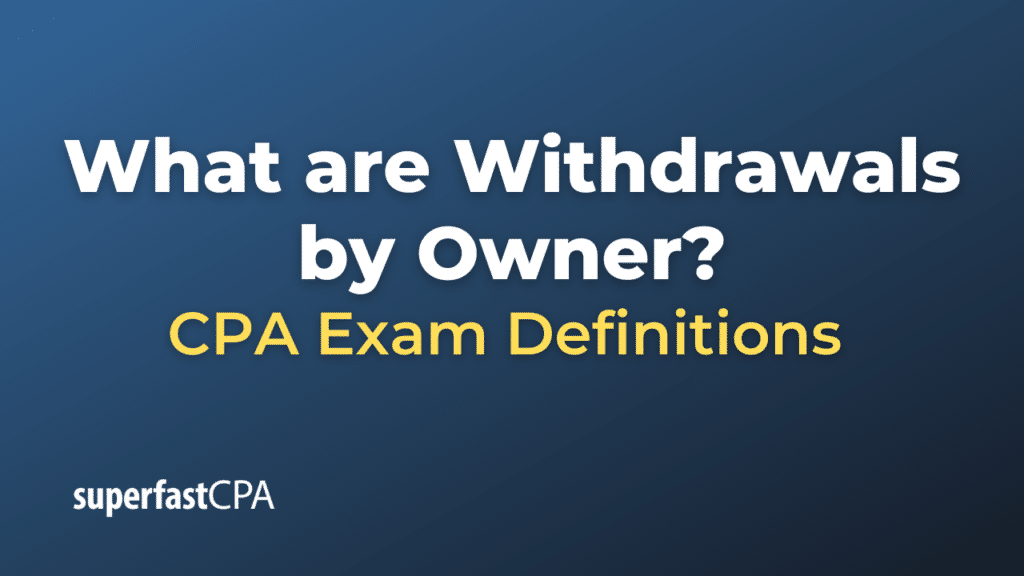Withdrawals by Owner
“Withdrawals by Owner” refers to the amounts taken out of a business by the owner for personal use. This concept is most relevant in the context of sole proprietorships and partnerships, where the business and the owner or owners are not distinct legal entities. In accounting, these withdrawals are also known as “draws” or “owner’s draws.”
These withdrawals are not considered business expenses, and they do not affect the income statement or the business’s taxable income. Instead, they are transactions that reduce the owner’s equity in the business. When an owner withdraws money or other assets from the business, the accounting entries typically involve:
- Decreasing an asset account (usually “Cash”).
- Decreasing the owner’s equity account (“Owner’s Drawings” or “Draws”).
Example of Withdrawals by Owner
Certainly! Here’s a detailed example to illustrate the concept of “Withdrawals by Owner” in accounting.
- Business: Emily’s Bakery, a sole proprietorship
- Owner: Emily
- Initial Cash in Bank: $10,000
- Initial Owner’s Equity: $10,000
- Withdrawal Amount: $2,000 for personal use (e.g., paying personal bills)
When Emily decides to withdraw $2,000 from her business for personal use, the accounting for this transaction would look like this:
Journal Entry
- Decrease in Cash (Asset Account):
- Credit: Cash (decreased by $2,000)
- Decrease in Owner’s Equity (Equity Account):
- Debit: Emily’s Drawings (increased by $2,000, which technically decreases equity)
The journal entry would appear as follows:
Debit: Emily's Drawings $2,000
Credit: Cash $2,000Impact on Financial Statements:
Balance Sheet
Before the withdrawal:
- Assets: $10,000 (Cash)
- Liabilities: $0
- Owner’s Equity: $10,000
After the withdrawal:
- Assets: $8,000 (Cash)
- Liabilities: $0
- Owner’s Equity: $8,000
Statement of Owner’s Equity
- Initial Owner’s Equity: $10,000
- Less: Withdrawal: $2,000
- Ending Owner’s Equity: $8,000
Cash Flow Statement (if prepared)
In the “Financing Activities” section:
- Cash outflow due to Owner’s Drawings: $2,000
Accounting Equation:
The accounting equation remains balanced before and after the withdrawal:
- Before: Assets ($10,000) = Liabilities ($0) + Owner’s Equity ($10,000)
- After: Assets ($8,000) = Liabilities ($0) + Owner’s Equity ($8,000)
In this example, Emily’s $2,000 withdrawal for personal use decreases both the Cash account and the Owner’s Equity, keeping the accounting equation in balance. This accurate recording ensures that the financial statements reflect the true financial position of the business.













